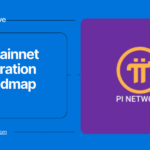What is Ripple?
Ripple is a privately-held fintech company that stands out for its global payment solution, known as the Ripple Network, or Ripplenet. This network operates on the back of Ripple’s innovative consensus ledger, termed the XRP Ledger, or XRPL. Ripple has significantly funded the development of the open-source XRPL, creating a platform that aims to facilitate fast and secure transactions globally.
How Does Ripple Work?
The XRP Ledger distinguishes itself from cryptocurrencies like Bitcoin, which depend on mining through a distributed blockchain. Instead, XRPL transactions are validated by a network of trustworthy validators. These validation nodes operate under a unique framework known as the Ripple Consensus Protocol Algorithm (RCPA). Under this system, any transaction must receive validation from at least 80% of the validators, ensuring a fast and reliable consensus without the need for mining.
Key Differences and Applications
Understanding Ripple involves distinguishing between several interconnected concepts. XRP is the native token of the XRP Ledger and serves as its ticker symbol. The distributed consensus ledger, known as the XRP Ledger, is managed by Ripple, the company that created the Ripple Network—an expansive global payment system leveraging the advantages of XRPL.
Founded in 2004 by Ryan Fugger, Ripple has evolved over the years, especially after its rebranding from Opencoin to Ripple Labs in 2013. Today, it is primarily recognized for its capability to facilitate swift remittances across borders. Importantly, XRP has a maximum supply of 100 billion tokens, pre-mined from inception.
If you’re considering trading XRP, it’s readily available on major exchanges, with Binance being the most prominent option currently. With Ripple’s innovations reshaping the financial landscape, understanding its components becomes crucial for anyone interested in cryptocurrency.
















